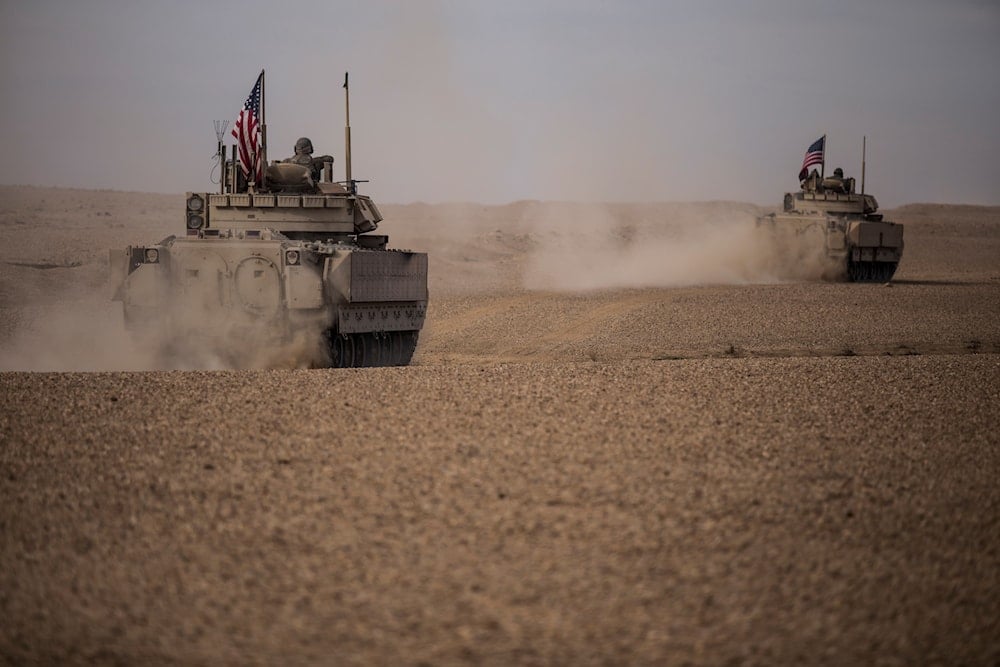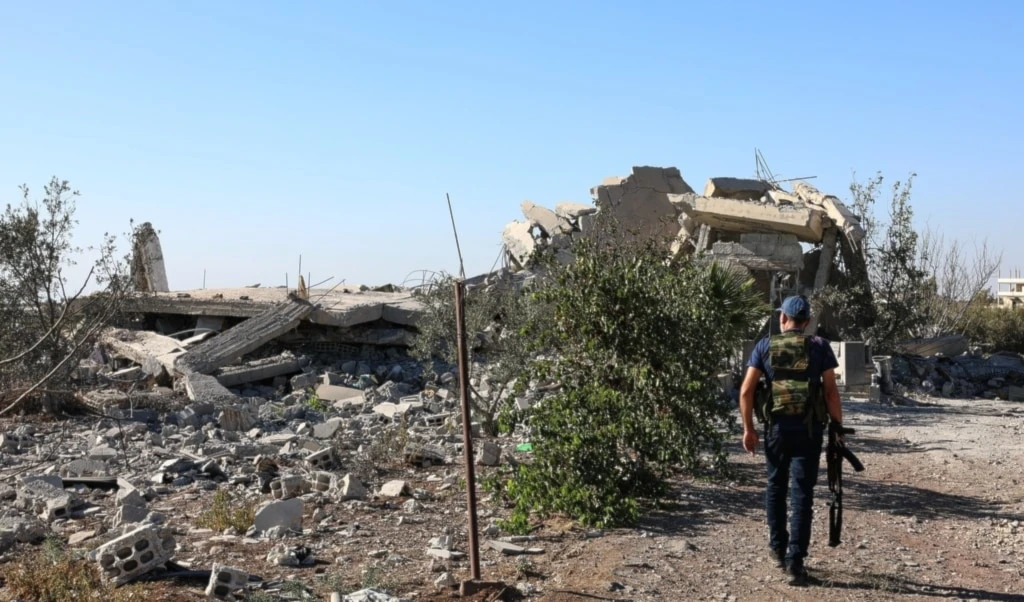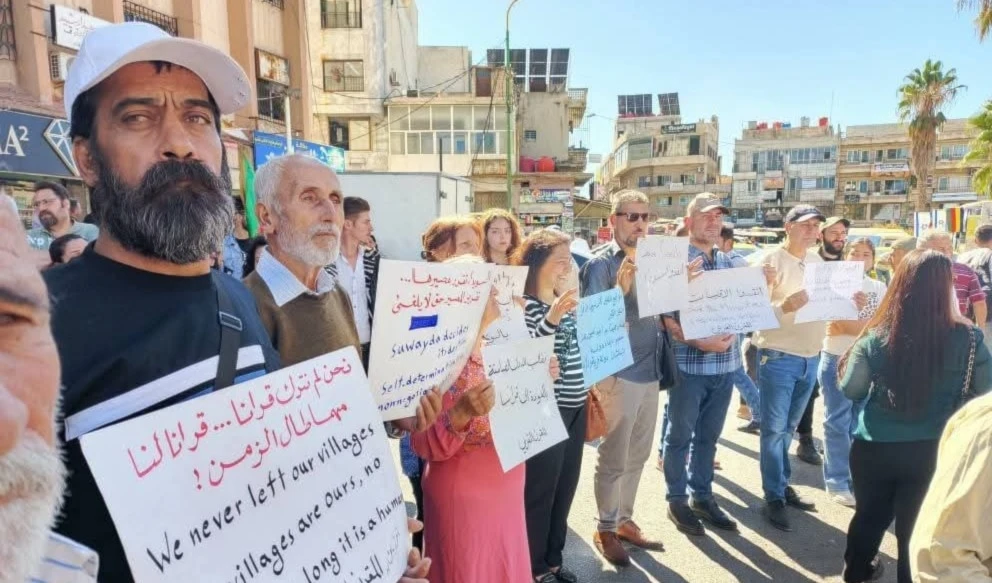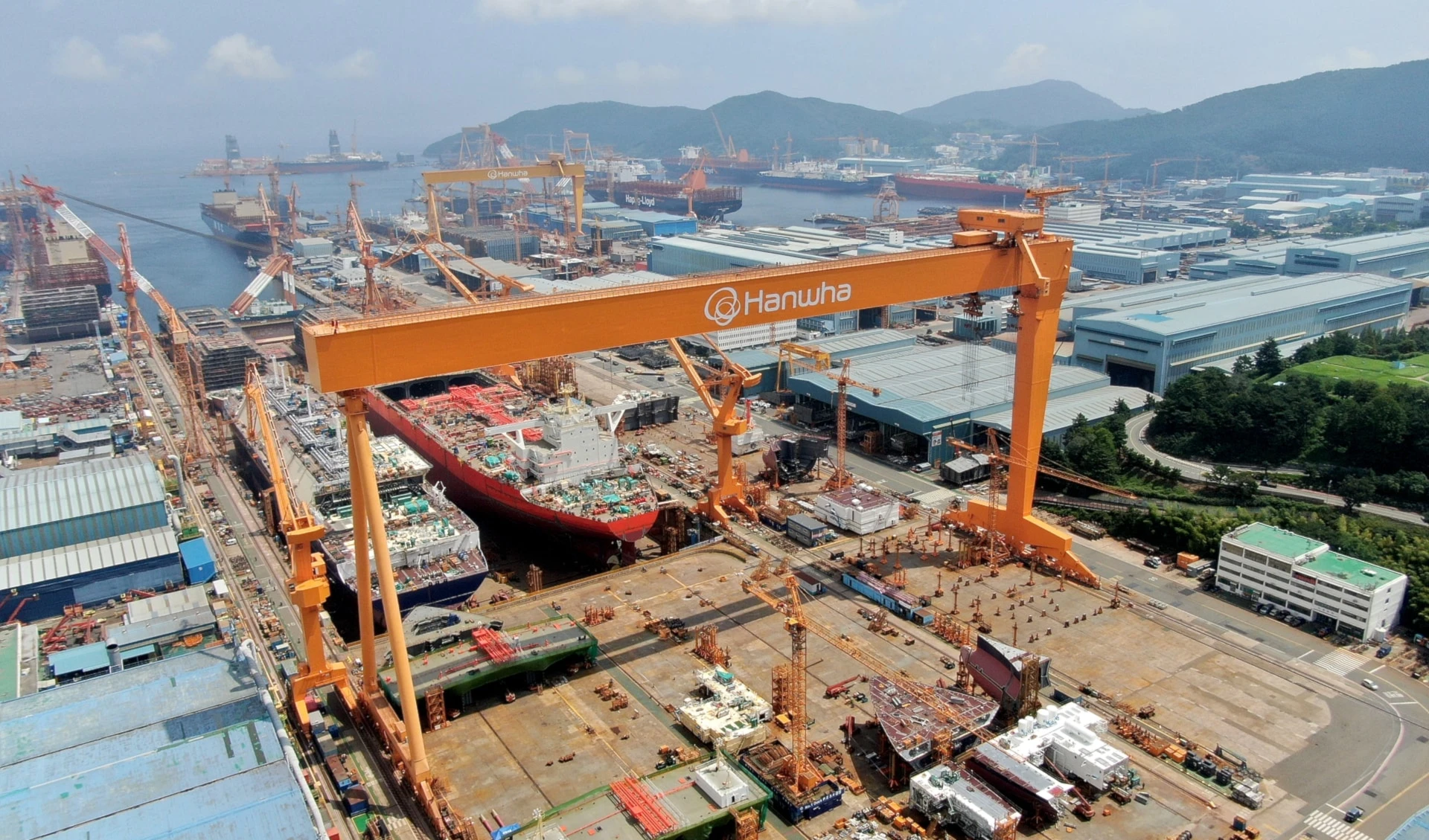Pentagon announces major US troop withdrawal from Syria
The Pentagon has announced a significant drawdown of US occupation troops in Syria, reducing forces from around 2,000 to fewer than 1,000 in the coming months.
-
 US occupation soldiers drive a Bradley fighting vehicles during a joint exercise with Syrian Democratic Forces at the countryside of Deir Ezzor in northeastern Syria, on Wednesday, Dec. 8, 2021. (AP)
US occupation soldiers drive a Bradley fighting vehicles during a joint exercise with Syrian Democratic Forces at the countryside of Deir Ezzor in northeastern Syria, on Wednesday, Dec. 8, 2021. (AP)
The Pentagon has confirmed plans to significantly reduce the US occupation forces in Syria, lowering troop levels to fewer than 1,000 in the coming months.
Speaking to reporters, Chief Pentagon Spokesperson Sean Parnell announced that the military “will consolidate its presence in Syria over the coming weeks and months,” describing the reduction as part of a “deliberate and conditions-based process.” The decision will bring the total number of deployed personnel to under 1,000 US forces.
At present, approximately 2,000 US occupation forces are stationed across various bases in northeastern Syria.
Strategic consolidation under Operation Inherent Resolve
The troop reduction will be conducted under the framework of Operation Inherent Resolve, which the US sells as a campaign against ISIS. According to defense officials, the remaining forces will be consolidated at select strategic locations, allowing the military to maintain flexibility while streamlining its footprint.
The drawdown is being overseen by Defense Secretary Pete Hegseth and is aligned with broader strategic goals, including shifting resources while continuing to monitor "extremist threats".
Meanwhile, the US military alleged that it will remain committed to combat operations against ISIS. Parnell emphasized that US Central Command remains fully capable of launching strikes against remaining 'militant targets' in Syria.
“CENTCOM will remain poised to continue strikes against what is left of ISIS in Syria,” Parnell claimed, adding that operational readiness remains a top priority even as troop numbers decrease.
US forces will reportedly continue to collaborate with the new regime forces in northeast Syria.
The wider context
In December 2024, the Pentagon acknowledged a significant and previously undisclosed increase in the number of US occupation troops in Syria, raising questions about Washington’s long-term military objectives in the country. The revelation came amid renewed scrutiny of US activities in Syria, including reports of smuggling stolen Syrian oil and covert operations targeting the government of then-President Bashar al-Assad.
At the time, Pentagon Press Secretary Major General Pat Ryder confirmed that approximately 2,000 US forces are currently stationed in Syria — more than double the previously stated figure of 900. Ryder claimed that the additional forces, drawn from both conventional and special operations units, had been deployed for “months” to support operations against ISIS. He described the troop increase as “temporary,” without providing a timeline for reduction.
The first US military deployment in Syria began in late 2015, officially under the pretext of combating ISIS. However, the nature and scope of the mission have evolved significantly since then.
Although US officials continue to claim that the troops are present to “rid the region of terrorists,” recent events and reporting suggest that the US occupation in Syria is aimed at securing control over strategic resources and maintaining influence in key areas.
In parallel to the troop increase, US forces smuggled a new consignment of stolen Syrian oil into northern Iraq back in April 2024. According to reports, a 45-tanker convoy transported crude from the al-Jazeera oil fields via the illegal al-Mahmoudia crossing, underlining long-standing accusations that US troops are engaged in systematic looting of Syrian natural resources.
The then-Syrian Foreign Ministry estimated the financial toll of such activities at over $25.9 billion in direct losses and more than $86 billion in indirect damages.
Stealing Syrian oil
Adding to the contention surrounding the US illegal occupation of Syrian regions, a report by The Telegraph in late 2024 revealed that the US had trained and armed the so-called Revolutionary Commando Army (RCA), a group composed of defectors from the Syrian Arab Army. The RCA was positioned to lead an offensive aimed at removing the Assad government, with US Special Forces reportedly briefing them just before the December 8 overthrow of the Syrian regime.
The RCA operated from the al-Tanf region, a strategic area near the Syria-Jordan-Iraq border. US occupation troops maintain a base there, citing anti-ISIS operations as their mission. However, analysts argue that the location allows Washington to project power and maintain leverage in southern Syria.
Aside from oil smuggling, US bases in eastern Syria have come under fire from local resistance. In November, a rocket strike targeted the US occupation base at the Conoco gas field in Deir Ezzor, reportedly in retaliation for US aggression on the cities of al-Mayadin and al-Bukamal.
Former US President Donald Trump once openly acknowledged the motive behind maintaining American forces in Syria: “We’re keeping [Syria’s] oil. We have the oil. The oil is secure. We left troops behind only for the oil.” His statement reinforced longstanding suspicions that US occupation forces in Syria serve broader strategic and economic purposes, including the destabilization of the previous Syrian government.
Read more: US shifts Syria strategy to curb Iran, not rebuild nation: WashPo

 5 Min Read
5 Min Read










